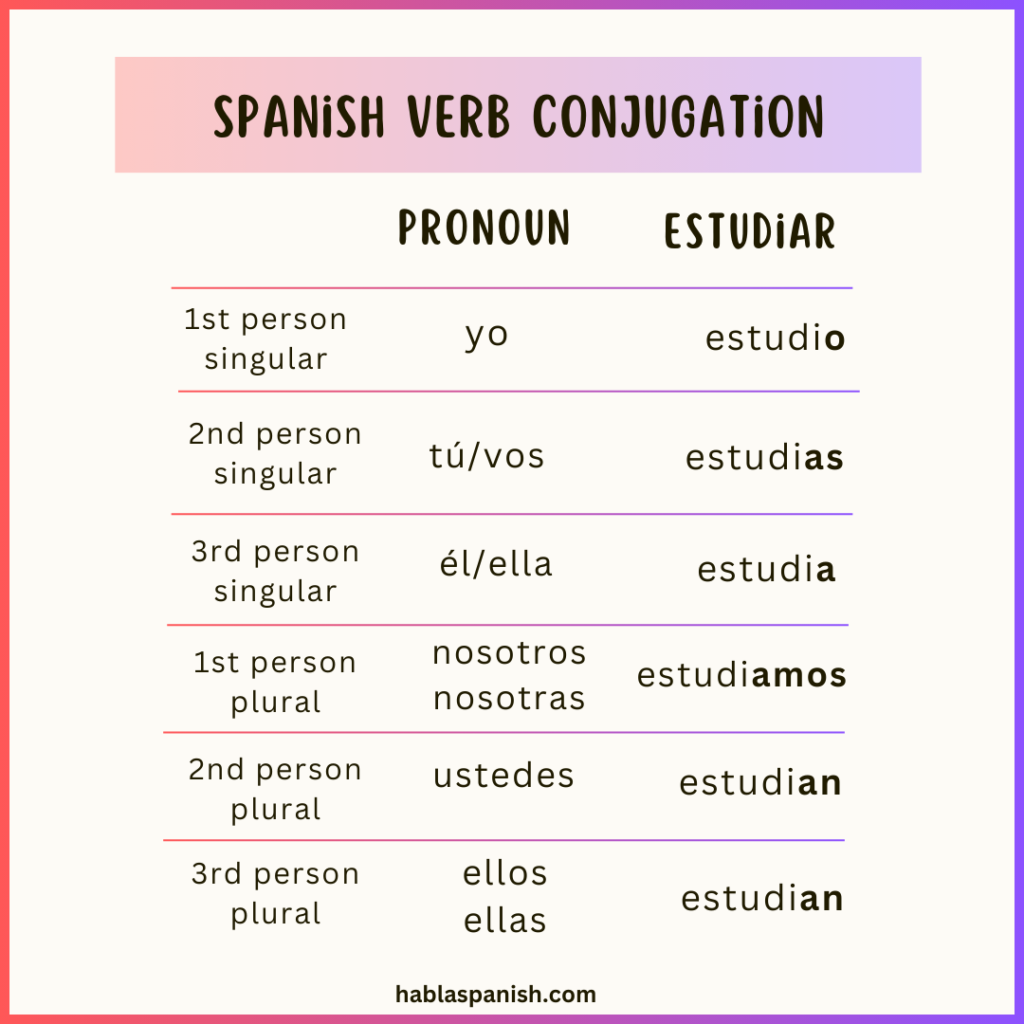Before searching for lists of basic Spanish verbs on the internet, I recommend learning the logic behind verb conjugation.
This way you’ll know how to approach any new verb you come across.
Here’s a simple guide to understand how Spanish verbs work.
Verb Groups
The first thing you need to know is that there are 3 groups of verbs in Spanish. This classification is based on the verb endings.
The first verb group ends in -AR, e.g. trabajar (work)
The second group ends in -ER, e.g. comer (eat)
The third group ends in -IR, e.g. escribir (write)
Why is it important to learn these verb groups? Because you’ll have to make changes to the verb endings depending on the tense1, and the subject of your sentence, which takes us to the next step.
1 verb tenses: past, present, and future
Personal Pronouns and Spanish verb conjugation
Every language has a list of personal pronouns. Personal pronouns are the elements that signal who is doing the action, what is traditionally called the “subject”.
Here’s a chart with both English and Spanish equivalents:

The subject determines how the ending of a verb changes in a particular tense (present, past, future).
Once you learn the pattern for each personal pronoun, you’ll be able to conjugate all other verbs of the same group in Spanish.
Let’s see how it works with an example from the first group: “trabajar” (work).

Notice the changes in bold? You have to repeat them every time you use a Spanish verb from the first group.
Give it a go and complete this chart with the verb “estudiar” (study).

Each verb tense has its own ending changes. These two examples are in the present, but you’ll gradually learn all the available possibilities of the Spanish language.
Now, have you finished completing the chart?
Take a look at the answers. You can leave a comment below telling me how you did it 😄

Next steps to master Spanish verb conjugation
The rules you’ve read so far apply to regular Spanish verbs. They are regular verbs because the ending patterns are always the same.
But there are also irregular verbs in Spanish, whose changes are different and unique to each verb.
So where and how should you start learning Spanish verbs? This is what I recommend to do:
1. Start with the first group of regular Spanish verbs (verbs ending in -AR) in the present tense. Once you grasp the logic of verb conjugation, move on to the other two groups.
2. Remember that we use language to describe and build our reality, so choose verbs you regularly use to talk about yourself and your life and learn those first.
3. Write your own examples. It’ll help you retrieve the use of those verbs easily because the content is familiar to you.
4. Dedicate some time to study Spanish verbs every day. The more you practice, the faster you’ll master them.
Free Practice Material
I have mentioned three groups, but explained only one, so here’s a free handout to learn and practice all three groups of regular Spanish verbs in the present tense.
Hope you find it useful. Read you in the comments 🤓🖐